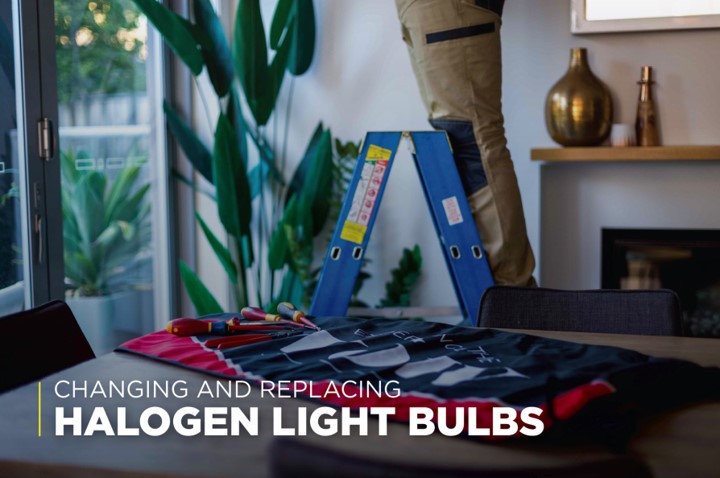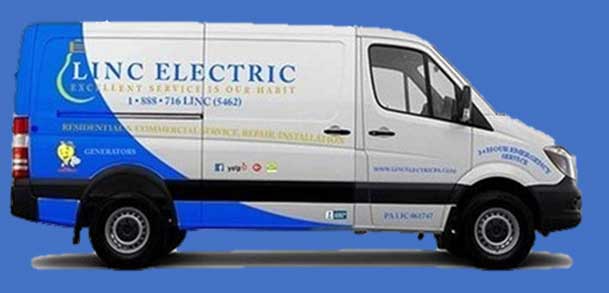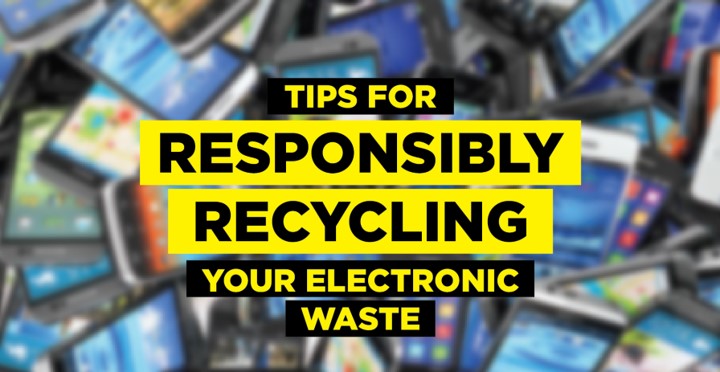A Step-by-Step Guide to Changing and Replacing Your Halogen Light Bulbs

You’re probably already aware that halogen light bulbs aren’t the most energy efficient options when it comes to lighting. So, how can you safely replace your halogen light bulbs, and what’s the best alternative? Here, we outline how to do it, and discuss the best light bulb alternatives to halogens.
Understanding halogen light bulbs
Halogen light bulbs work by heating a thin wire filament of tungsten metal with electricity. This type of lightbulb emits a bright white light, like standard incandescent light bulbs. However, halogen light bulbs differ slightly to incandescent, in that they’re filled with a special gas that allows the vaporized tungsten to be deposited back onto the filament. This means they last longer and are more efficient, but also run hotter than incandescent.
While some people like the idea of heating with their lighting, halogens are an inefficient way to heat up your spaces, and you’re definitely better off separating your lighting and heating. You can get low-voltage halogens or high-voltage options, but low voltage doesn’t necessarily mean that the light bulb will save you energy. Halogens are a step up from other convention incandescent in efficiency and lifespan, but better alternatives are available today.
Safely removing halogen light bulbs
Because of the way they’re constructed, halogen light bulbs can become extremely hot during operation, so take care when removing your lightbulbs. Follow these steps to minimize risk of injury.
•Unplug and cool – Always unplug the light fixture from the electrical socket and wait until it’s completely cool before removal. You might need to wait at least 10 minutes. Check with a quick feel of the bulb to make sure it’s sufficiently cool for removal.
•Housing and parts – If the light-bulb housing of your light fixture includes heat guards and protective covering, remember where these fit, and carefully set them aside so you can reattach later.
•Handling light bulbs – Use a firm but gentle grasp to unscrew the lightbulb so you don’t crack the thin glass. Wear a glove or use a piece of cloth for extra protection. Turn the bulb counterclockwise to remove, alternatively you might have a “bayonet” fitting, in which case you will need to push-in and turn. If you’re unable to turn the lightbulb, don’t apply excessive force, Instead, contact Platinum Electricians and we will remove it safely for you.
•Hard-to-reach spaces – If you’re removing a bulb from a hard-to-reach spot, ensure you have the right safety equipment to get you to the light, alternatively we can help you out as our electricians have specialty access equipment.
•Disposal – Always wrap old halogen light bulbs in layers of paper to prevent injury in case of glass breakage. Check with your council whether you can place the lightbulbs in your garbage. •
Alternatives and replacements for halogen light bulbs
LEDs or CFLs are the best alternatives to halogen light bulbs, with lower wattage halogens and IRC halogens being the next-best options.
•LEDs or CFLs – LEDs and compact fluorescent lightbulbs are efficient, long-life alternatives to halogens. Because they’re more efficient, a lower wattage will get you more lumens. Lumens measures brightness. For example, a 4-5-watt LED will yield 230 lumens, while a 20-watt halogen is required for the same brightness. Note LEDs are more energy efficient than CFLs.
•Lower wattage halogens – If LEDs or CFLs are not an option, you can opt for a lower wattage halogen. You’ll save on electricity and the space won’t be as hot, but brightness will also be compromised.
•IRC or energy saver halogen lamps – IRC or energy saver halogen lamps are another alternatives. These offer the same brightness while using less power, and they can help you save up to 25% in energy costs.
Things to check when choosing replacement light bulbs
With numerous manufacturers and product options, you’ll probably be able to find an LED, CFL, or another alternative that’s compatible with your lighting fixture. However, always check the following before you buy, to save yourself a trip back to the store.
•Light level – Make sure the light level of your replacement bulb is what you’re looking for. Check lumens instead of watts or volts to determine brightness.
•Time to full brightness – If you need the lightbulb to reach full brightness quickly, check the package to make sure your replacement bulb can light up within the required time.
•Dimmers – If you have a dimmer feature on your light fixture, check that the replacement bulb can accommodate this.
•Base type – The base type is probably the most obvious thing to check. Whether it’s a diameter or style (such as Edison screw or bayonet cap), check your replacement has the right base type.
•Color – You can get bulbs in white light or tinted shades in warmer yellows, so check the packaging to make sure it’s the right shade for the space.
If you use halogen lights in your business or home, you should probably look at replacing them with more efficient solutions like LEDs or CFLs. Take extra care when removing and handling halogens and get professional advice if necessary. Linc Electricians is a market leader, providing a diverse client base with a full range of electrical services throughout Philadelphia and surrounding counties. If you have a lighting-related electrical issue, contact our friendly service team for more information on how we can help.





